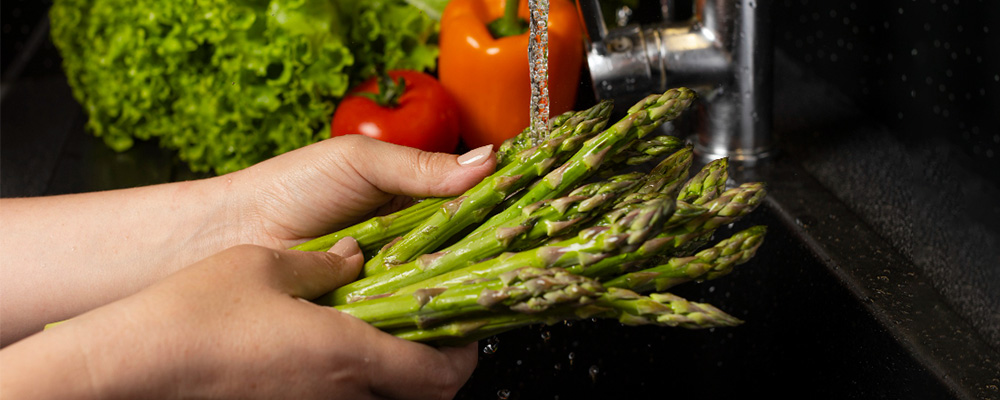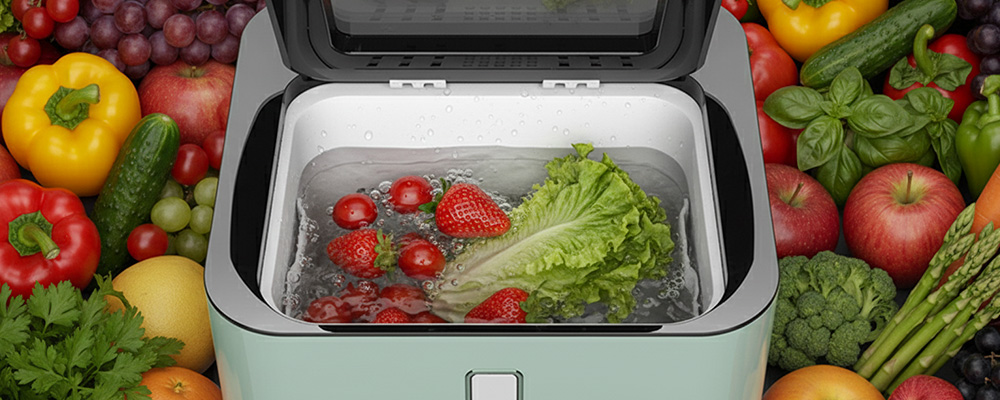Eating more vegetables and fruit is a healthy dietary habit strongly recommended by nutritionists and public health organisations worldwide. According to reports from World Population Review and other institutions, obesity rates are becoming increasingly severe in many countries. Across Europe, national obesity rates range between 15% and 25%, with the United Kingdom at around 26.94%, while in the United States, the figure reaches approximately 42.7%.
In regions where obesity rates are higher, fruit and vegetables tend to make up a smaller proportion of people’s daily diets. The World Health Organization (WHO) therefore advises all regions to increase their intake of fruit and vegetables, as doing so helps balance nutrition and reduce obesity-related risks.
Eating plenty of vegetables and fruit is important — but so is cleaning them properly before consumption. Did you know that even “pre-washed” fruit and vegetables bought from the supermarket should still be washed thoroughly before eating?
What Needs to Be Washed Away?
Whether you wash by hand or use a home food-cleaning appliance, it’s important to understand what needs to be removed. Regardless of whether they come from modern, traditional, or even strictly organic farms, all fruit and vegetables bring certain substances that should be cleaned off before eating. These may affect both the taste and your health. Typically, these include:
Pesticide and Fertilizer Residues: Modern agriculture relies heavily on pesticides and fertilizers. As a result, almost all produce carries some level of residue after harvest. These can affect flavour and, in some cases, pose health risks, so removing them should be a top priority.
Soil and dust: From orchard or farm to your table, fruit and vegetables go through complex transportation and storage processes. During these stages, even pre-processed produce can reabsorb soil or dust.
Insect eggs, bacteria, and microorganisms: Whether originating from the growing environment or picked up during transport, these are substances that must be washed off before eating.
Waxes and preservatives: To extend shelf life, some fruit and vegetables are coated with edible waxes or preservatives, which should be removed to ensure safe consumption.

Why All Need to Wash?
Our recommendation is to wash all fruit and vegetables, no matter how or where they are purchased — even those labelled “pre-washed”.
Pre-washed produce is usually processed in food-handling factories using large-scale industrial or commercial cleaning systems. While these machines can clean large quantities efficiently, they may not completely remove all pesticide or fertiliser residues. Furthermore, from cleaning to packaging, the produce passes through multiple handling stages where it may come into contact with bacteria or other microorganisms.
Studies have shown that packaged salads from supermarkets can still contain traces of E. coli or Listeria. Although the quantities are small, food safety experts recommend washing again at home, as this significantly reduces risk — particularly for vulnerable groups such as the elderly, pregnant women, and young children.
How Should You Wash Fruit and Vegetables?
So how can you clean fruit and vegetables properly to remove contaminants and protect your family’s food safety?
1. Hand-washing
Hand-washing is traditional but effective. First, soak the produce in clean water for several minutes. Then gently rub the surface and crevices of the fruit, or lightly scrub each leaf and root of the vegetables. Finally, rinse thoroughly with clean water to remove any remaining debris.
For better removal of pesticide residues, fertilisers, and microbes, you can add a few table salt, edible vinegar, or a food-grade cleaning solution to the water during soaking. These can significantly enhance cleaning performance, and salt and vinegar are generally safe for the human body.
2. Home Vegetable & Fruit Cleaning Machines
As tech advances, household food-cleaning devices are becoming increasingly common. Popular cleaning methods include ultrasonic cleaning, bubble washing, and turbine cleaning.
Take the ultrasonic vegetable cleaning machine as an example: this machine uses an ultrasonic transducer to generate high-frequency vibrations (above 20 kHz) in the water. That will create numerous micrometers or even nanometer bubbles to rinse and scrub away dirt and microorganisms from the surface of fruit and vegetables. Because the bubbles are so small, they can penetrate deep into the tiny crevices of leaves and surfaces, removing residues thoroughly. Ultrasonic cleaning is also very effective against microbial contamination and pesticide residues. This means using household vegetable cleaning machines can efficiently clean produce without your hands ever touching the water.
Some ODM cleaning appliances manufacturers go a step further and add hydroxyl or ozone technologies to their machines, which enhance the removal of pesticide residues and kill microorganisms without the need for detergents. These technologies are now well-developed and reliable, giving consumers peace of mind.
Eating more fruit and vegetables is an essential part of a healthy diet, but proper cleaning is the key to ensuring food safety for your family. Whether you prefer hand-washing or a home cleaning appliance, ensuring every bite is clean and safe is a vital step towards healthier living.


